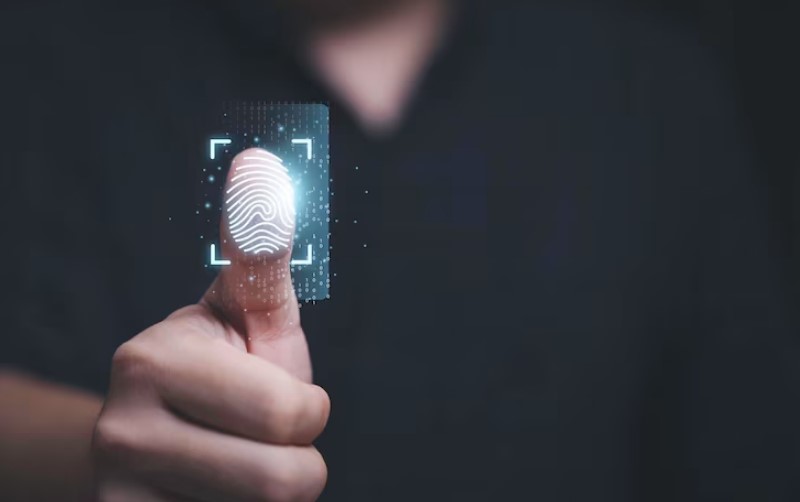Biometric services are gaining popularity due to their ease of use among private and public business operations. Ever since the pandemic, the world has quickly transitioned towards online experiences. For the protection of fraud that emerges online, especially the fraud related to e-transaction and e-economy fostering cyber security protocols.
As the trend of conducting business has changed, internet banking is evolving, and so are AML biometric services. Despite online banking yielding thousands of benefits, there exist negative consequences as well, including the prevalence of money laundering-related crimes.
Biometric technology not only relies on information provided but rather confirms the identity of the individual with the most reliable means of physical attributes which neither match between two individuals nor is possible to easily manipulate.
Apart from biometric screening, many other security measures have been implanted to combat the prevalence of corruption, money laundering, and transactional fraud,
This blog will talk about the efficacy of biometric AML services and the extent to which they can simplify the screening process. The blog will also discuss the advantages and disadvantages of digital transformation, followed by how biometric screening service reduces the hassle.
What is a Biometric Screening Service?
The screening process undertakes the usage of unique physical attributes such as fingerprints, facial features, iris scans, and much more. The feature is widely used across a wide range of industries for authentication or improving the speed of the screening process.
When used in banking or other financial institutions, biometric technology helps speed up background evaluation with just a single image or any other physical attribute which brings about the entire customer information in seconds.
Advantages of Going Digital for Your Business
While digitalization seems to be a positive advancement, this section will address the positive changes the advancement may bring along:
- The shift towards digital processing of payments leaves electronic footprints that enable the investigators to track back financial flows thus enabling access to all the relevant information in one unified place.
- The integration of artificial intelligence and machine learning in digital transactions enables the detection of patterns and anomalies associated with money laundering by reducing false positives up to 80%.
- With digital advancements, compliance regulations are evolving as well. Meeting KYC (Know Your Customer) and AML (Anti-Money Laundering) regulations have become easier with technological advancements.
Disadvantages of Going Digital for Your Business
While digitalization seems to be a positive advancement, this section will address the drawbacks the advancement may bring along:
- With digital transactions, anonymity has raised concerns about maintaining transparency. Digital transactions simplify the process, they provide a certain level of anonymity which makes it difficult to track the flow of funds or illicit actors that might facilitate corrupt practices.
- Before digitalization, the scope of corruption was limited to a particular jurisdiction. Global reach has expanded the coverage and possibilities of expanding corrupt practices across the globe.
- With digital transactions, the speed of allowing money to flow from one jurisdiction to another has improved significantly, putting the financial landscape at higher risk for money laundering.
How Biometric Services Help Simplify The Screening Process?
Technological advancements are vital to combat money laundering. Smart and innovative solutions help identify complex patterns and hidden networks which otherwise remain undetected. The role of certain technologies in biometric services are discussed below:

Artificial Intelligence & Machine Learning
Artificial Intelligence and Machine Learning in biometric screening help analyze large volumes of cases in seconds. With just a single tap organizations can detect patterns of money laundering, anomalies and risks of money laundering associated with the person.
Speed of Onboarding
When it comes to running a business AML biometric process helps greatly. Slow processing of background checks and thus ultimately slow processing of customer onboarding is not only a hassle for customers but serves as a major setback for organizations, as they end up losing valuable customers.
With biometric screening, users can upload a single image and fetch precise results with a reduced amount of false positives. This not only cut short the manual workload but let the organization experience the positive side of technological integration in KYC.
Pre-Employment Screening
Pre-employment screening is run on candidates to confirm their suitability with respect to experience, fitness and capability. However, when it comes to AML biometric screening, organizations can access database that offer insights about fitness and probity status of the individual along with background check which enable insight into credibility status of the individual (i.e if he’s or has ever been sanctioned or blacklisted by any other organization)
To Sum It Up
Biometric screening is the new shift in the era of technological advancements. As the money laundering crimes are on the rise, the need for a fast and efficient screening system is undeniable. Biometric solutions serve the purpose by automating the hassle of comprehensive screening to great extent.

